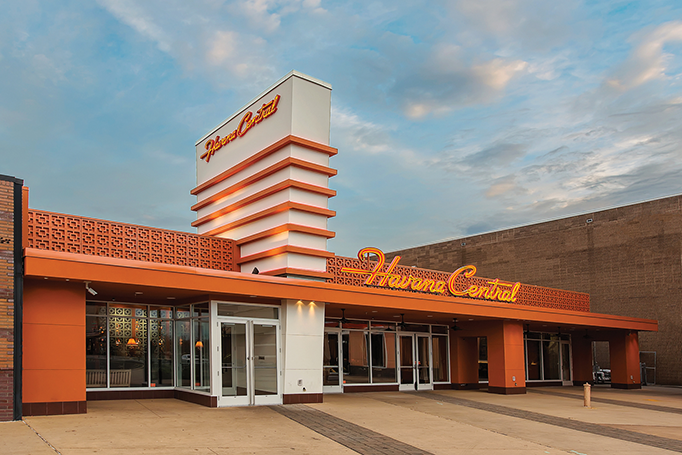
Havana Central, a New York City–based restaurant chain with an opulent setting reminiscent of Cuba’s pre-Castro heyday, is eager to tap into the deep-ening U.S.-Cuba détente — which could well help reawaken interest in Cuban cuisine here. At present Havana Central operates four restaurants, all of them in the New York metro area, including its latest, which opened in November in Edison, N.J. But the headlines about Cuba could represent opportunity for expansion on a national scale, the chain’s executives say. “The more that [Cuba] is in the front of the press, the more visibility I think we’re going to have,” said Jeremy Merrin, founder and president.
The handful of small Cuban restaurant chains currently in the U.S. operate mainly among or near the expat communities of South Florida and northern New Jersey. Only two — Philadelphia-based Cuba Libre Restaurant & Bar and New York City–based Sophie’s Cuban Cuisine — are present across multiple states. None has a footprint of more than 10 restaurants, however, so the field seems to be wide open. “The Cuban segment is up for grabs, because there are no really dominating players,” said -Lauren Hallow, associate editor for concept analysis at Technomic, a Chicago-based restaurant consulting firm.
Hallow suggests that Havana -Central, with its expansive menu and fashionable ambience, has a clear -advantage over some of the more typically Cuban competitors. “The food is a bit more mainstream than authentic Cuban restaurants,” she said of Havana Central. “It attracts a wider variety of customers.” Indeed, Havana Central appears intent on competing with the likes of Rocco’s Tacos or Tequila Bar, which operates six restaurants in -Florida and one in -Brooklyn, N.Y. “-Havana Central is a popular spot for special-occasion outings like birthdays and group dinners, so it will be competing with other high-energy chains,” Hallow said.
Merrin, a former e-commerce executive, found himself in search of a new line of work when the late-1990s dot-com boom became a bust. He certainly moved fast, launching Havana Central in New York City’s Union Square in 2002. Interestingly, Merrin is not Cuban himself. “I had a good friend who is Cuban, and we were talking about opportunities, and she said there’s really no national or regional chain doing Cuban food,” said Merrin. “The more research I started to do, I realized it was a real opportunity — and still is.”
Merrin actually traveled to Havana, where he visited kitchens in restaurants and even in private homes. He also resorted to poring through old books and photos in an effort to tap into Cuba’s glamorous past as the “American Riviera.” All this research resulted in a culinary offering that includes such classics as ropa vieja (shredded, braised beef) and vaca frita (fried and shredded flank steak), as well as design touches intended to re-create the image of a lost paradise that perhaps the eldest, at least, among the U.S. Cuban community may recall. In yet another nod to the past, the bar at each Havana Central is modeled to look like Sloppy Joe’s Bar, an icon of pre-revolutionary Havana.
“In everybody’s mind’s eye, or at least the American population’s mind’s eye, Cuba is still a very sexy, sort of mysterious, fun, tropical place,” Merrin said. “When you talk about Cuba, people think of the mojitos, the Carmen Miranda dancers, the nightclubs — it was an extremely entertaining, wild and crazy place prior to Castro. That’s the feeling we want to evoke.”
The very first Havana Central, which has since closed, measured only 70 square feet. By a huge contrast, the Havana Central restaurant at Roosevelt Field, in Garden City, N.Y., totals 13,000 square feet. Havana Central aims to keep leaning to that larger format. “We’re looking to open restaurants of about 9,000 square feet and about 250 seats,” Merrin said. “We are looking at malls, but also top-tier urban locations.” The company wants to be near well-established, large-format restaurants such as The Cheesecake Factory and Capital Grill. “From my perspective, it’s the more the merrier,” Merrin said, “because then we become [part of] a big restaurant destination.”
Havana Central’s next move will most likely be into Miami, the epicenter of Cuban cooking, according to Merrin, and Los Angeles is a target too. “I think that there are very few areas that we would not do well in,” Merrin said. “We’d like to build up to 100-plus restaurants in key locations around the United States.”
That sort of growth may take some time, according to Hallow, but the long-term outlook for Cuban cuisine is strong. “The Cuban segment is still largely undeveloped, because many Americans aren’t familiar with Cuban cuisine — most of us have never been there,” Hallow said. “Once Americans start vacationing to Cuba and eat the food, then they will start seeking those dishes and flavors here in the U.S.”
For leasing, contact Jeremy -Merrin, president, at (212) 584-4020 or jmerrin@havanacentral.com.
